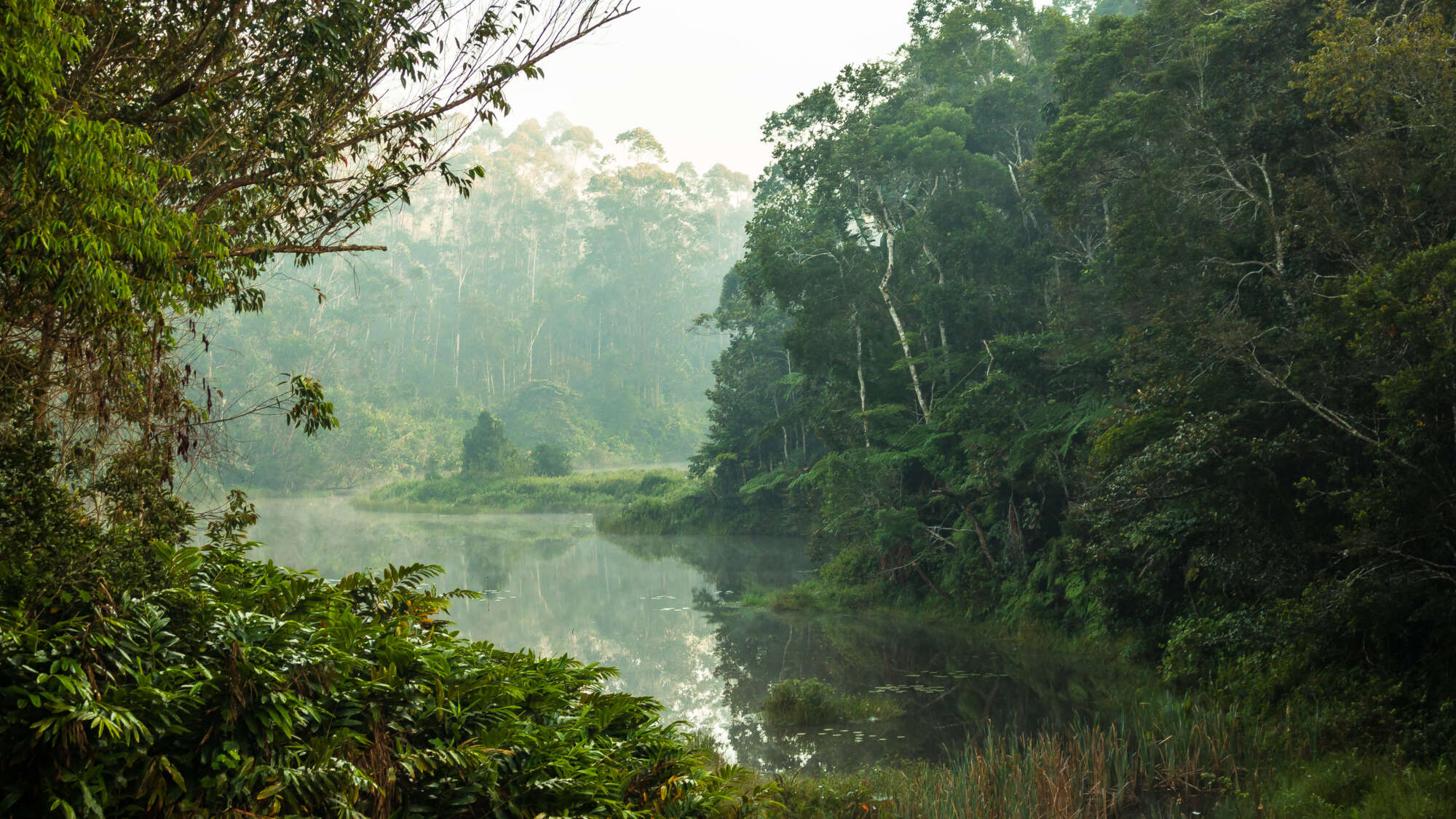Humanity’s survival and well-being are deeply tied to forests in ways that are ecological, economic, and cultural. Today’s forests cover less than one-third of the global land mass (about 4 billion hectares), down from an estimated 50–60% before the onset of large-scale human deforestation. They hold more than half of all terrestrial biodiversity, regulate global climate and water cycles, influence weather patterns, and supply billions of people with energy, food, medicine, and livelihoods.
The preservation of the planet’s biodiversity relies entirely on how we manage and interact with the world’s forests.
Reforestation is a critical strategy for mitigating climate change because it increases the Earth’s capacity to absorb carbon dioxide (CO₂) – the main greenhouse gas driving global warming – while also enhancing ecosystem resilience.
In particular, we look at recent studies investigating the most cost-effective approaches to reforestation and the mitigation of climate change. For many years, forest managers have been asking which is best: allowing forests to naturally regenerate, on the one hand, or to plant new forests?
The Challenge: The Degradation and Loss of Forests
Despite significant efforts and progress, forests continue to disappear at alarming rates, as confirmed by the 2020 UN report, The State of the World’s Forests.
Drivers of human-led deforestation have been timber and natural resource extraction, agricultural expansion, infrastructure development, and industrial development. Forest degradation reduces or eliminates the productivity of forest ecosystems, with the long-term effect of reducing the biological and economic benefits of a forest. In addition, climate change (resulting in extreme weather events, floods, droughts, and water shortages), fires, land and forest degradation, and biodiversity loss continue to impact the health, livelihoods, and economies of people and nations, posing serious threats to sustainable development.
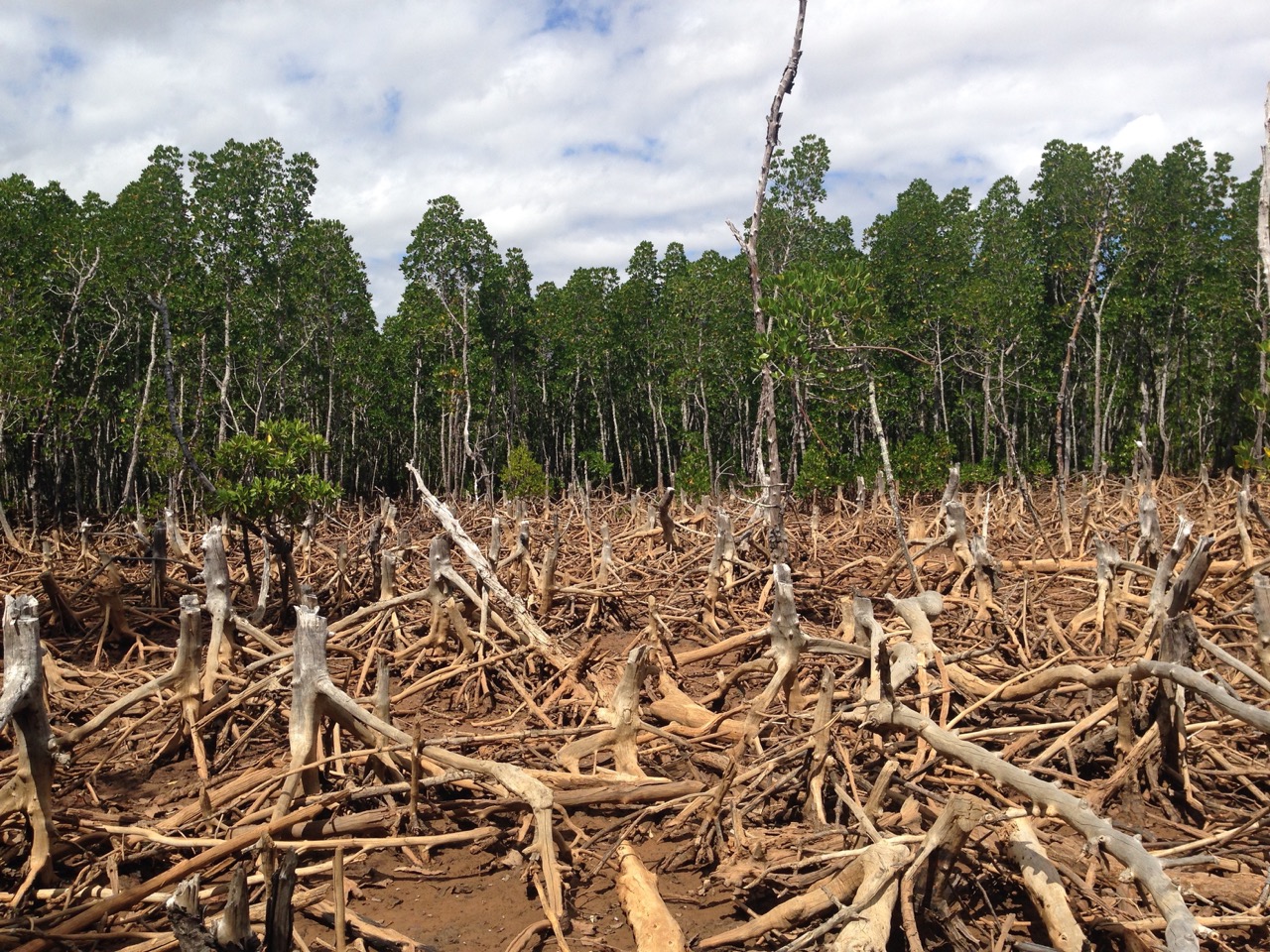
Photo by Cunningschrisw
No continent with forests has been spared.
- The Amazon, the world’s largest rainforest, has lost around 17% of its forest cover in the last 50 years, mainly due to cattle ranching and soy cultivation.
- The Congo Basin of Africa, the world’s second-largest rainforest, loses around 1.2 million hectares per year, driven by small-scale agriculture, logging, and charcoal production.
- In Southeast Asia, more than 30% of Borneo’s forests have been cleared since 1973, largely for palm oil plantations and logging; this habitat loss has critically endangered orangutans, tigers, and rhinos.
- Beef production, mining, and the paper and wood industries have been the primary drivers making Australia’s deforestation rate one of the highest in the developed world, with only half of the nation’s original forests remaining.
- The European Red List of Trees reports that 58% of Europe’s 454 endemic tree species (those found nowhere else on earth) are threatened with extinction today.
Deforestation is a critical problem because it undermines the very systems that sustain life on Earth for humans and many other species. Forests act as powerful carbon sinks, absorbing vast amounts of greenhouse gases and helping to regulate the global climate; their destruction accelerates climate change by releasing stored carbon. For billions of people, forests provide essential resources, such as food, medicine, and livelihoods, so their degradation directly affects human well-being and economic stability. Deforestation also disrupts the water cycle, increasing the risk of droughts, floods, and soil erosion, which threatens food and water security. The loss of forests drives species extinction at an unprecedented rate.
Ultimately, deforestation jeopardizes climate resilience, ecosystem balance, and the survival of both human and non-human life, making it one of the most urgent environmental challenges of our time.
The Geography of Deforestation
Only five countries – the Russian Federation, Brazil, Canada, the United States of America, and China – possess more than half (54 %) of the world’s forests.
Generally, forests today are classified as either naturally regenerating forests or planted forests. Globally, 93% of the world’s forest areas are naturally regenerating forests, while the remaining 7% percent are planted forests, with just less than half of those (at 3%) being intensively-managed plantation forests
Naturally regenerating forests
Of the naturally regenerating forests, about one-third of world’s forests today are primary forests, often called old-growth forests and defined by their relatively undisturbed native tree species that lack visible signs of human interference. These forests are prized for their biodiversity, carbon storage, and their cultural and heritage values. However, almost two-thirds (61%) of these primary forests exist in only three countries: Brazil, Canada, and the Russian Federation.
Globally, primary forests have been in decline, though the rate has slowed since 2010. Although varying by context, the drivers of deforestation in primary forests include unsustainable industrial timber extraction, agricultural expansion, and fires that often accompany infrastructure development.
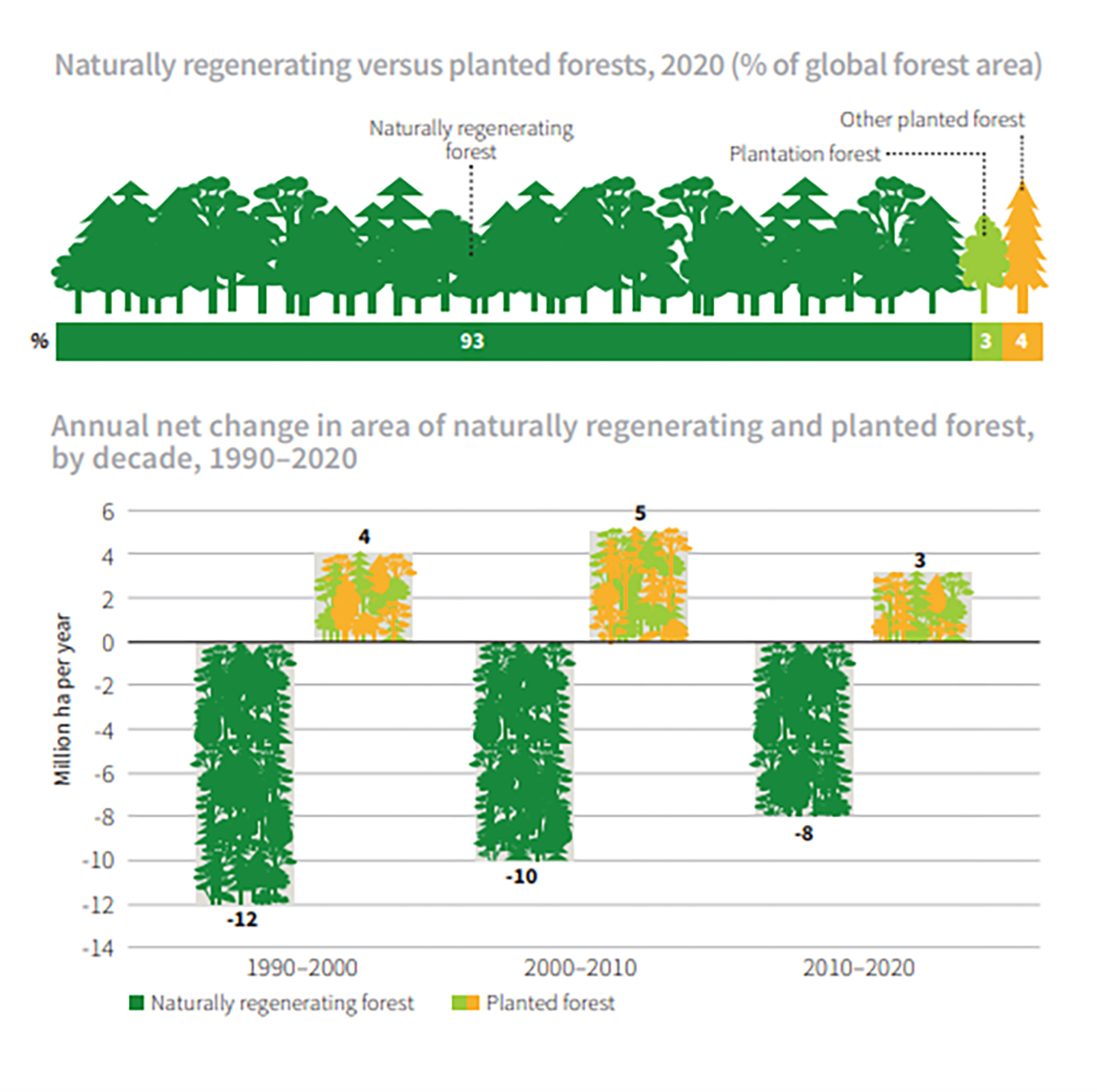
Secondary naturally regenerating forests are those in recovery after a disturbance (human or natural). They share several distinct characteristics in contrast to old-growth forests. Their trees are generally younger, and their canopies are more simplified and open, with a dense understory compared to the complex, gapped, and multi-layered canopies of mature, old-growth forests. They also tend to have a lower species biodiversity than their primary forest counterparts.
Progress is being made to reverse the loss of forest cover worldwide, with the net loss of forest area having decreased from an average of 7.84 million hectares per year in the 1990s to 4.74 million hectares per year in the period 2010–2020. However, as of the date of the 2020 report, “the world is not on track to meet the target of the United Nations Strategic Plan for Forests to increase forest area by 3 percent worldwide by 2030.”
Since the 1990s, the area of naturally regenerating forests has decreased by 301 million hectares (7%), with Africa leading the annual rate of net forest loss, followed by South America. In contrast, Asia leads the world in net gain of forest area between 2010 and 2020, followed by Oceania and Europe.
Planted Forests
The area of planted forests has increased globally by 123 million hectares since 1990 and now covers 294 million hectares, though the rate of increase has slowed since 2010. Plantation forests, generally grown for commodity production, differ from naturally regenerating forests in that they usually consist of regularly-spaced, planted rows of one or two tree species (which can be native or exotic) of equal age. Globally, almost half (44%) of plantation forests grow non-native species. Ninety-nine percent of the planted forest area in South America holds plantation forests, while plantations comprise only 6% of planted forests in Europe.
A major concern regarding plantations is that they result in monocultural forests that lack natural biodiversity and that they often involve introducing non-native species. If all the trees are planted at the same time, the forest also lacks the natural staggering of tree ages in their lifespan phases.
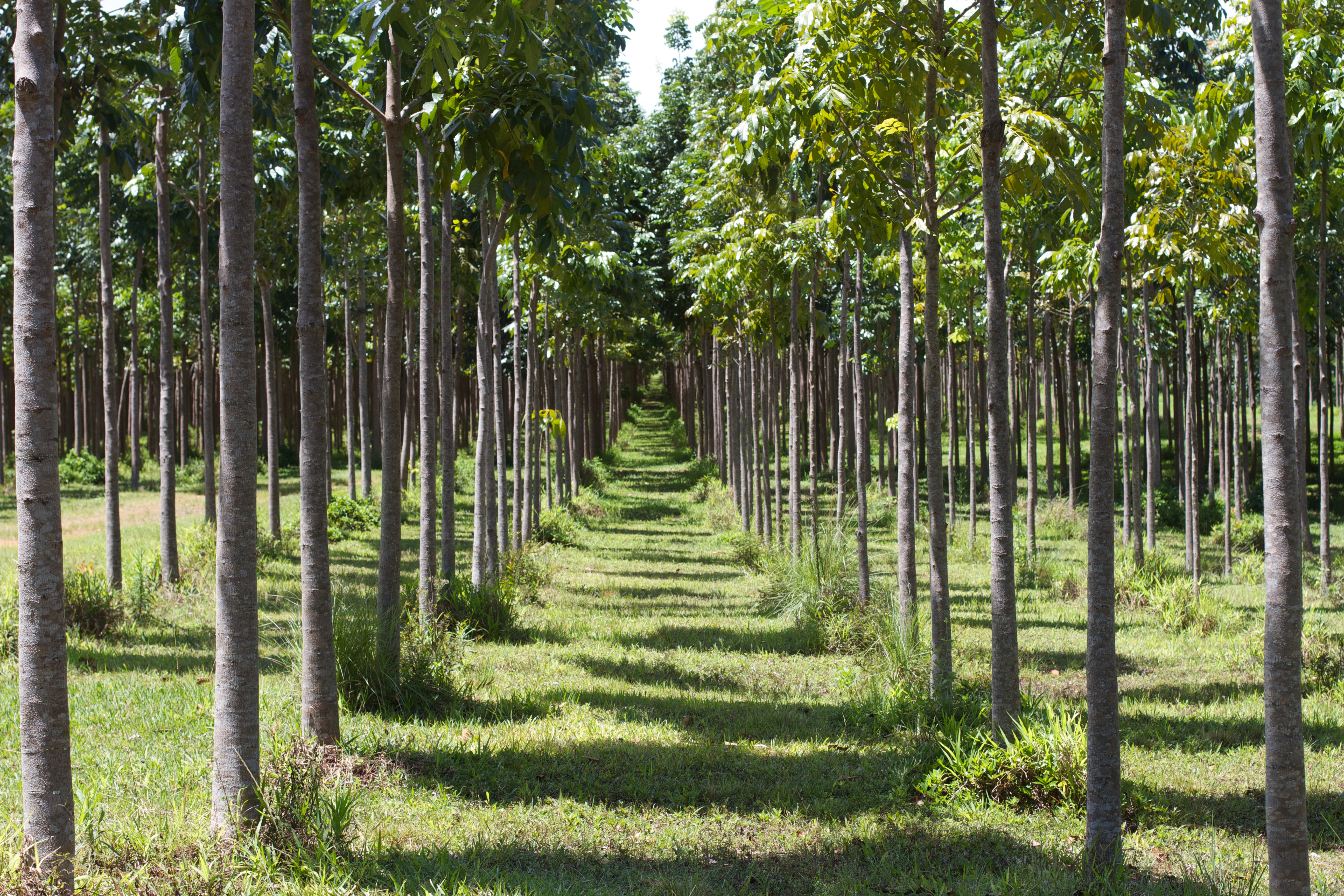
Photo by Alan Levine
The other 55% of planted forests, “Other planted forests,” are usually the result of ecosystem restoration or forest landscape restoration (FLR) for ecological reasons. Such restoration might entail mixed-species tree planting with native trees. Another method, assisted natural regeneration, works to re-establish a blend of native species through “weeding, fire prevention, attracting seed dispersal, excluding grazing animals or other disturbances, and enrichment planting of ecologically or economically important plants.”
The aim is for these forests to more closely resemble natural forests at maturity. Planted or seeded by humans, these forests are usually more diverse in structure and species than are plantations. They may be managed for biodiversity, carbon sequestration, ecosystem restoration, soil and water protection, and community benefits.
Forest Restoration Through Global Initiatives
Despite the irreparable losses of old-growth primary forests, the prognosis by The State of the World’s Forests 2020 contains elements of hopefulness. Its authors note that the tide is beginning to turn on deforestation and biodiversity loss as we see a decrease in the rate of global forest loss following applications of approaches that balance sustainable use of forest biodiversity with conservation efforts.
The 2020 UN report argues that effective governance, cross-sector policy alignment, secure land tenure, respect for the rights and knowledge of indigenous peoples and local communities as co-participants, stronger biodiversity monitoring, and innovative financing mechanisms are all essential for achieving these transformations.
Efforts have been underway for several decades to both reverse the increasing loss of intact forests as well as to find the most effective ways to increase forest cover. These initiatives are led by various agencies within the United Nations as well as strategic partnerships and coalitions between government and civil society organizations (e.g., NGOs), research and policy organizations, and corporations and foundations in the private sector.
The years leading up to 2020 saw a notable increase in actions to slow deforestation and to fight illegal logging, along with a rise in international agreements and results-based carbon payments.
The series of reports issued in 2020 marked the end of an early phase of many initiatives, such as the Aichi Biodiversity Targets, adopted by the UN Convention on Biological Diversity in 2010 for 2020. Target 11, aiming to put at least 17% of terrestrial area under protection, was exceeded, although Target 7 (to sustainably manage areas under agriculture, aquaculture, and forestry) was not met for forests. Meanwhile, many new goals and targets have been set for the current decade.
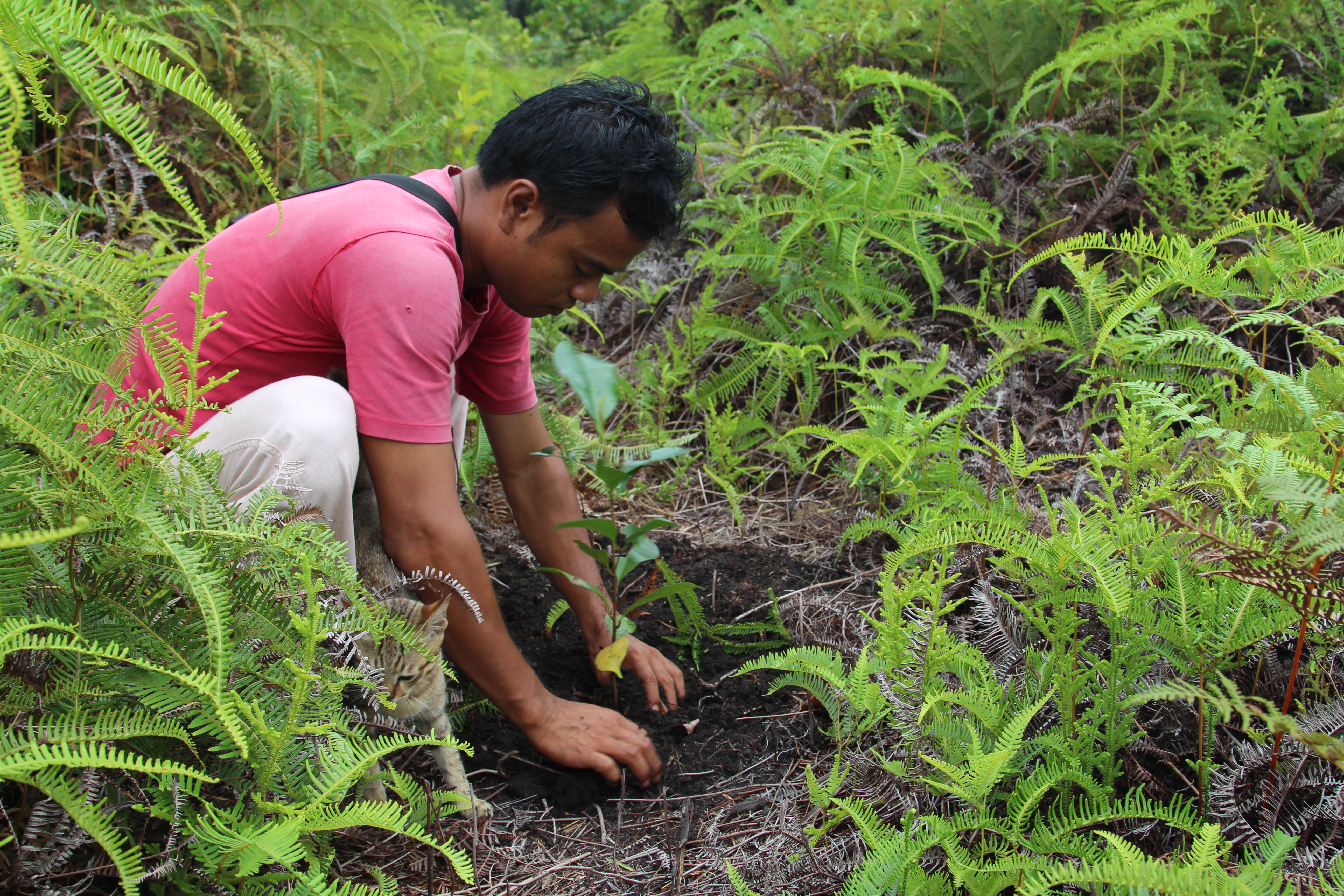
Photo by James Anderson
Global Initiatives on Reforestation
The UN Decade on Ecosystem Restoration (2021–2030) has been mobilizing global restoration efforts across ecosystems, including forests. The UN Strategic Plan for Forests 2017-2030 and its Global Forest Goals were developed by the UN Forum on Forests, which aims to increase forest area by 3% worldwide by 2030. This initiative combines the economic, social, and environmental aspects of sustainable development and forest management while aligning with the objectives of other international forest-related agreements, processes, and goals.
The Collaborative Partnership on Forest’s 2025-2028 Work Plan, which includes a joint initiative on forests for food security and nutrition, targets the development of cross-sectoral policies to strengthen the contributions of forests to agriculture, food security, and nutrition. This plan, which is chaired by the UN Food and Agriculture Organization (FAO), will strengthen action to support the UN’s Global Forest Goals (GFGs).
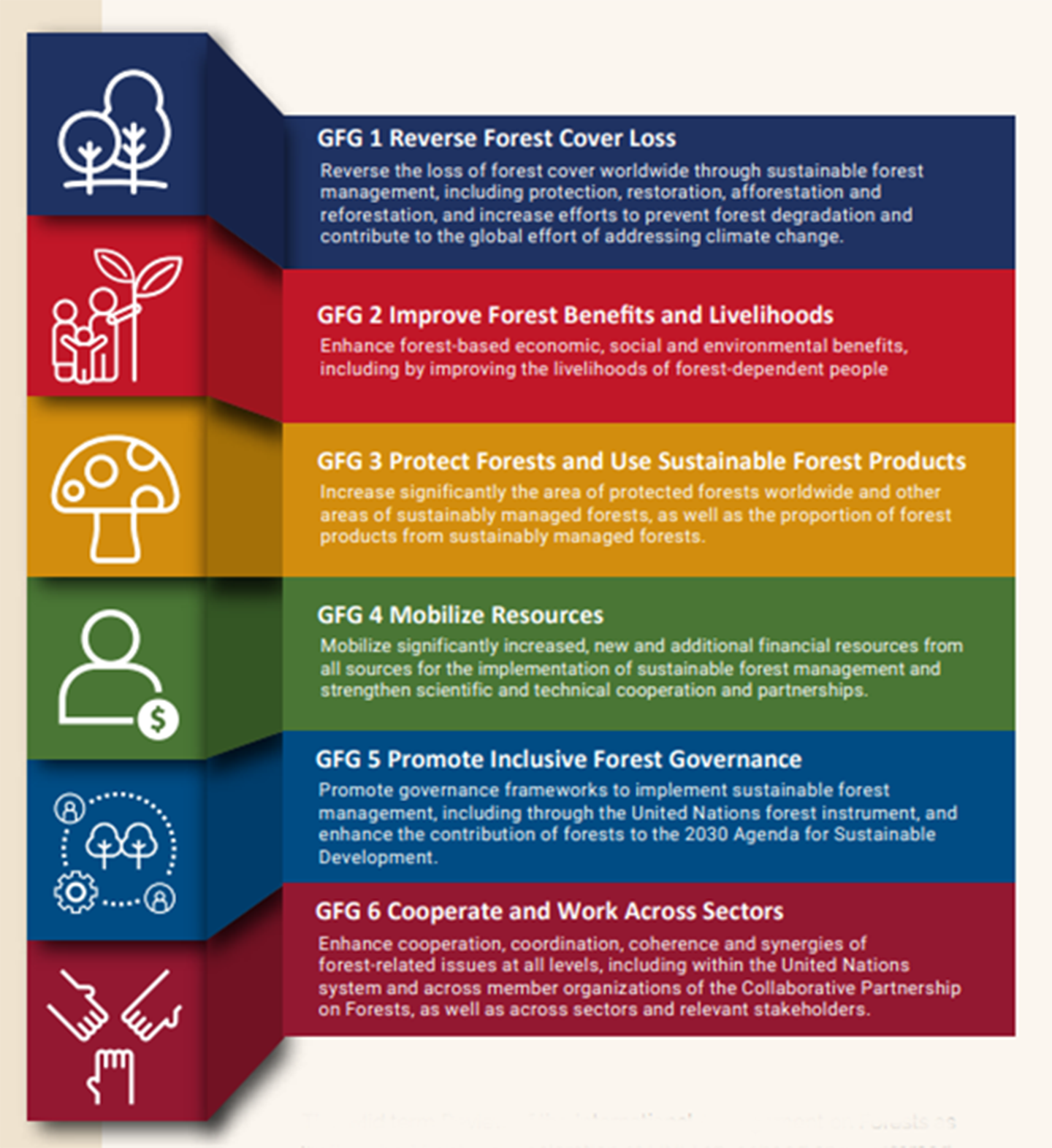
The Bonn Challenge, launched in 2011 by the International Union for Conservation of Nature (IUCN) and Germany, has a goal to restore 350 million hectares of degraded land by 2030.
The Trillion Trees Initiative is a partnership led by the World Economic Forum to protect and restore one trillion trees globally by 2050.
The New York Declaration on Forests is a coalition committed to halting deforestation and restoring 350 million hectares by 2030.
The AFR100 (African Forest Landscape Restoration Initiative) is an African-led effort to restore 100 million hectares by 2030.Initiative 20×20 is an initiative to restore 20 million hectares in Latin America and the Caribbean.
The Kunming-Montreal Global Biodiversity Framework (KMGBF), adopted in 2022 by the UN Convention on Biological Diversity, strives to effectively restore at least 30% of degraded terrestrial (and other) ecosystems by 2030.
The Finances of Reforestation
Unfortunately, reforestation and other interventions to mitigate climate change, such as greenhouse gas (GHG) abatement, do not come without a cost, so the search for the most cost-effective approaches has become a pressing issue.
Greenhouse Gas Abatement
Emissions abatement means curbing greenhouse gas (GHG) emissions to reduce the amount of GHGs contaminating the atmosphere. The abatement cost is simply the cost of an intervention that will reduce greenhouse gas emissions by one ton.
The UN Environmental Programme’s (UNEP’s) Greenhouse Gas Abatement Cost Model (GACMO) was developed on the principle that, to limit global warming, the necessity to calculate current and future greenhouse gas emissions, as well as the effects of climate actions, is critical.
The GACMO model, developed over 20 years of research, allows nations and regions to calculate and track their GHG emissions using data on energy consumption of fossil fuels and electricity as well as the economic effects of about 100 climate mitigation actions in different sectors like forestry, agriculture, solar, etc.
Carbon Payments
An increasingly popular means to incentivize reforestation is for corporations and other organizations to make financial transactions (carbon payments) to offset, or cancel out, their own greenhouse gas emissions. This can involve paying for:
- Carbon credits, which are tradable instruments representing a reduction in greenhouse gas emissions, often generated by projects like reforestation or renewable energy development. Companies or individuals can purchase these credits to offset their own emissions.
- Carbon offsetting, which aims to neutralize a carbon footprint by investing in projects that reduce or remove carbon dioxide from the atmosphere, effectively counterbalancing emissions from other sources. Examples include funding tree planting or investing in renewable energy.
- Carbon pricing, which includes mechanisms like carbon taxes, where a fee is levied on carbon emissions, or cap-and-trade systems, where permits to emit are traded. These systems create a financial incentive to reduce emissions.
Carbon payments help channel funds to projects and initiatives that actively reduce greenhouse gas emissions or remove carbon from the atmosphere. By incentivizing emissions reductions and supporting carbon removal, carbon payments contribute to global efforts to mitigate climate change. Carbon payments support sustainable development by encouraging investments in renewable energy, sustainable agriculture, and other environmental practices.
Projects that restore and protect forests can generate carbon credits, which are then purchased to offset emissions from other sectors.
Income from Sustainable Timber Harvests
Another effective mechanism to finance climate change mitigation is the sustainable harvesting of timber within well-managed forests. Under sustainable forest management frameworks, revenue is generated from selective logging and reduced-impact logging, which balance economic returns with the maintenance of forest structure and carbon stocks.
However, as one recent study notes, the transition to this approach presents challenges for landholders:
One of the main barriers to restoration is the prohibitively expensive establishment and maintenance costs. Yet upfront costs represent just one financial burden of forest restoration. A second is the disruption of annual cashflows a landholder may be accustomed to when shifting from a land use that sustains annual cashflows (e.g., cattle ranching) to one that provides cashflows in 15+ years (e.g., timber management).
A global analysis of tropical forests found that reduced-impact logging techniques can cut carbon emissions by up to 50% compared to conventional logging, while still supplying approximately 45% of timber demand. Also, income derived from wood products often exceeds that from ecosystem services, although the latter provides critical climate, biodiversity, and water benefits. Ecosystem services include provisioning (e.g., wood), regulation (e.g., climate change mitigation, biodiversity protection), and cultural/recreational services.
Integrating carbon finance with timber revenues, such as selling carbon credits for longer forest rotation, retention logging practices, or biodiversity buffers, can help offset the reduced profits of more sustainable forest operations. As one researcher explains, “Forests will have two notable economic roles in the future: providing renewable raw material and storing carbon to mitigate climate change. The pricing of forest carbon leads to longer rotation times and consequently larger carbon stocks but also exposes landowners to a greater risk of forest damage.” In essence, blending timber income with payments for carbon and ecosystem services enables sustainable forestry to both profit and deliver meaningful climate mitigation.
Comparing GHC Abatement Costs for Reforestation Methods
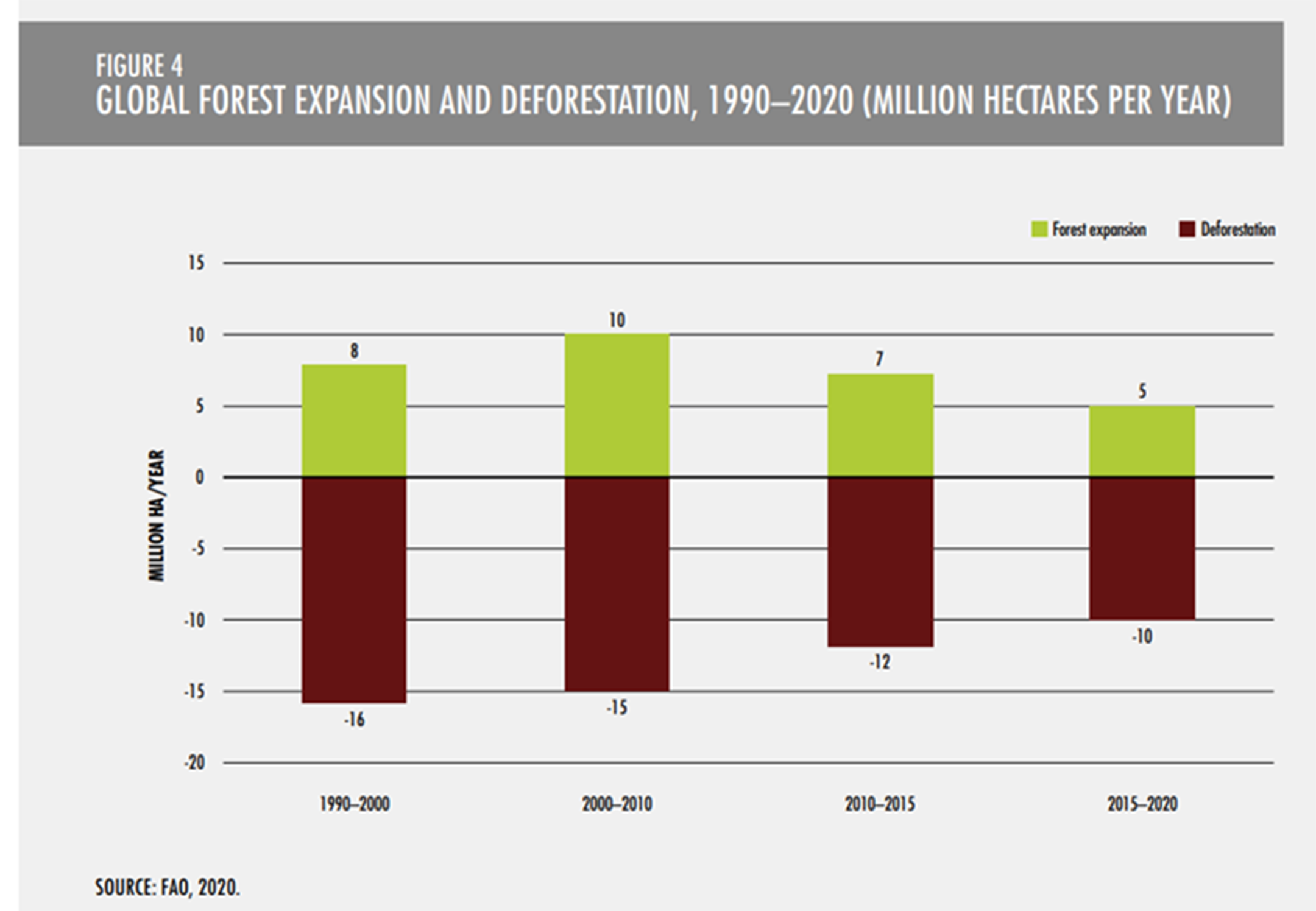
Although reforestation is a climate-change mitigation option that has significant potential, it often comes with a high abatement cost (the cost-per-ton of reducing greenhouse gas emissions). The cost varies by reforestation method and location.
Key considerations include the fact that plantations generally have higher upfront costs, which can be partially offset by revenue from timber sales, as explained above. While plantations may, in some cases, accumulate carbon faster than naturally regenerating forests, this is not always the case. Harvesting of plantations releases a portion of stored carbon back into the atmosphere, with the rest being retained in wood products that gradually emit carbon over time.
Recent improvements in modeling carbon accumulation for both plantations and naturally regenerating forests now allow for large-scale, spatially detailed mapping of the relative cost-effectiveness of these two reforestation methods.
A landmark 2024 study in forest economics and management by an interdisciplinary team of researchers from the United States, Australia, China, and Sweden represents a cooperative effort between academic institutions, NGOs such as Conservation International and The Nature Conservancy, the World Bank, and a carbon removal corporation to address the dilemma of planning the most cost-effective strategies for reforestation globally.
These researchers calculated and mapped the greenhouse gas (GHG) abatement cost (in US dollars per ton of CO₂) for the two major reforestation approaches: natural regeneration and plantations. Their goal was to produce data that could guide reforestation initiatives. This data can be combined with other pertinent information (such as existing land use, landholder type, biodiversity benefits, economic and social constraints, and equity considerations) to help design reforestation initiatives to best meet local and regional needs.
The research team calculated and mapped abatement costs for both reforestation methods across 138 low- and middle-income countries, using machine learning and regression techniques to develop and integrate six spatial datasets. Their datasets included:
- the implementation costs of passive natural regeneration and plantation reforestation
- the opportunity costs of reforestation (the land’s value if left in its current use, defined as land rent—the share of annual agricultural profit from crops or livestock)
- the most likely choice among 15 plantation genera
- carbon accumulation over time from natural regeneration, assuming no harvesting or sale of wood products
- carbon accumulation over time from plantations, assuming periodic harvesting for wood sales
- carbon stored in harvested wood products along with net revenue from timber sales
By modeling these variables for both methods, the team produced a global map showing which reforestation approach would be most cost-effective for each location.
This project designated areas as suitable for reforestation if they were feasible for natural regeneration (lying within 5 km of a natural forest) and/or plantation reforestation (lying within 40 km of an existing plantation).
Examining areas considered suitable for reforestation or plantations in each of the 138 nations, the study generated integrated maps showing both the implementation costs and opportunity costs of reforestation, as well as identifying the probable plantation species and carbon storage potential of each method (including carbon stored in harvested wood products).
Determining the most cost-effective method of reforestation for any particular location depends upon several factors, including
- relative carbon accumulation and harvest rates
- relative implementation costs
- higher opportunity costs (making the difference in revenue from wood products a less significant consideration)
- distribution of feasibility of natural regeneration versus plantations
The study also found that the 30-year, time-discounted abatement potential of reforestation at below $50 per ton of CO2 is 31.4 gigatons of carbon dioxide (GtCO2), which is 44% more abatement potential than natural regeneration alone or 39% more than plantations alone. Reforestation offers 10.3 times more abatement below $20 per ton of CO2 (2.8 times more abatement below $50 per ton of CO2) than the most recent Intergovernmental Panel on Climate Change estimate.
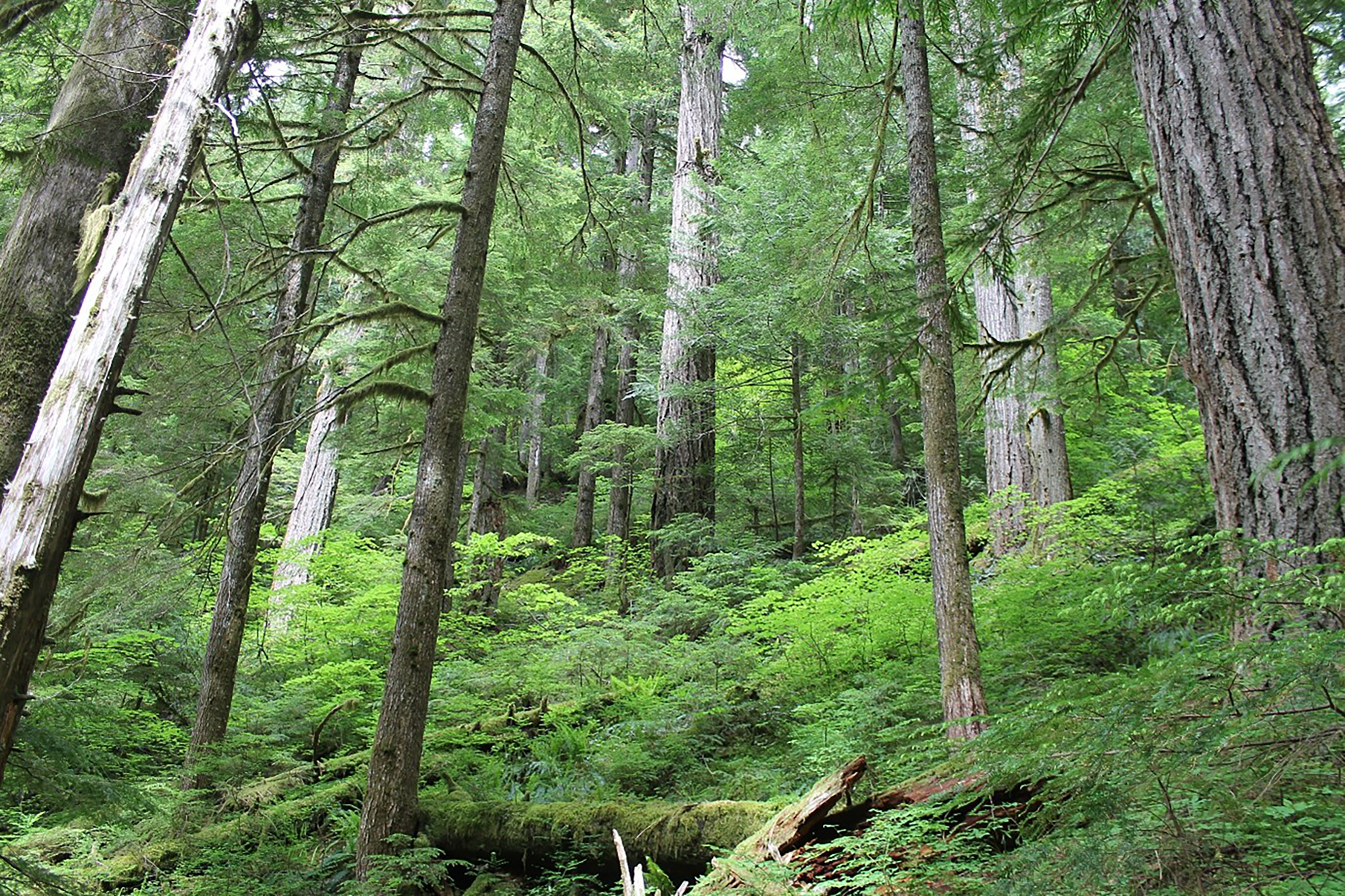
Photo by Theresa Hogue
The Value of a Mixed Reforestation Strategy
Ecological Benefits
When landscapes are devastated by wildfire or other disturbances, the question often arises: Should we rely on nature’s own regenerative power or actively plant trees? Increasingly, a rising tide of forestry experts are now advocating a mixed approach – one that combines the resilience of nature’s own regenerative efforts with the targeted support of strategic human planting. This approach balances ecology, economics, and culture while drawing upon the lived knowledge of local and indigenous communities.
In particular, the trend is shifting toward prioritizing regeneration when remnants of forests exist and then interspersing native-species planting. This “rewilding” movement (a term used especially in Europe) focuses on transforming a given environment from a disturbed or impacted state back to a natural state (as opposed to the concepts of preservation or conservation, which aims to preserve environments in their natural states). In addition to increasing carbon storage, such a naturally regenerated state positively impacts water flow, wildlife species and their habitats, pollination patterns, soil quality, reduction of erosion, and air temperature.
As Lanhui Wang of Lund University explains, “[P]lantations can regain their canopy quickly yet remain brittle to fire and pests, whereas rewilded or old-growth stands may recover slowly but preserve their adaptive capacities and culturally valued services.” Plantation forests typically provide far less carbon storage than natural forests, which also conserve biodiversity and resilience against climate change.
Incorporating natural regeneration into the mix is cost-effective, reducing expenses associated with nurseries, seedling transport, and labor. Planting can then be reserved for areas where regeneration is slow or non-existent. A 2025 analysis of post-fire recovery noted that “tree planting accelerates forest recovery by about 25% when strategically combined with natural processes,” making the mixed strategy a cost-efficient solution.
In addition to cost-effectiveness, such mixed reforestation treatments result in structurally complex, denser, and more biodiverse forests, thus fostering resilience and carbon uptake. The use of existing rootstock supports genetic diversity; scientists in Israel studying ancient olive groves found that existing rootstocks “harbored much higher genetic diversity than the scion cultivars grafted onto them.” This preserves a wider genetic base, contributing to the long-term resilience and adaptability of restored forests.
A mixed approach creates resilient ecosystems: habitat mosaics that support diverse species. These are also self-sustaining, as they rely on herbivores and natural succession, which reduces ongoing human maintenance. Restoring ecosystems isn’t solely about tree-planting. It is about re-establishing whole ecological networks by letting nature lead with thoughtful human support.
Natural regeneration often outpaces planting in restoring biodiversity and ecosystem complexity. A global meta-analysis found that naturally regenerating forests recover vegetation structure and species diversity 34–56% faster than plantations. Fire ecologist Matthew Hurteau of the University of New Mexico stresses the importance of planting where it makes sense rather than applying a one-size-fits-all solution: “Let’s not do the old plant‑and‑pray method … let’s plant where we know that their chance of survival is quite high.”
Maintaining the resilience of the forest is imperative. “We cannot have a forest that has compromised resilience and expect it to continue to provide the benefits that we’ve come to expect and rely on as humanity,” explains Craig Allen, a resilience scientist and research professor at the University of Nebraska.
Social, Cultural, and Economic Resilience
Programs that integrate natural regeneration with carbon credit markets are increasingly viable, generating income while promoting climate resilience. In Huayacocotla and Zacualpan, Mexico, community-managed forests have been partially reforested naturally and are now enrolled in high‑quality carbon credit programs. These initiatives boost landowners’ incomes by generating and selling carbon credits. They also support soil and biodiversity conservation while also encouraging community-led forest monitoring and stewardship.
Not only are regenerated forests a source of resilience in terms of biodiversity, but they also serve, as the title of a recent report from the International Union of Forest Research Organizations avers, as “pillars of social and economic resilience.” As such, the report states:
Forests help maintain the broader health and well-being of human communities through socio-cultural benefits; they moderate the climate, including having an impact on global carbon and water cycles; contribute to hazard prevention; and provide leisure and mental health benefits through recreation and tourism.
Sociocultural and ecological resilience require both biological diversity and inclusive governance. Incorporating local and indigenous community partnerships is essential for such projects, but doing so also needs to involve indigenous or traditional cultural knowledge about forest management. Cultural perspectives highlight the value of working with the forest rather than imposing solutions on it.
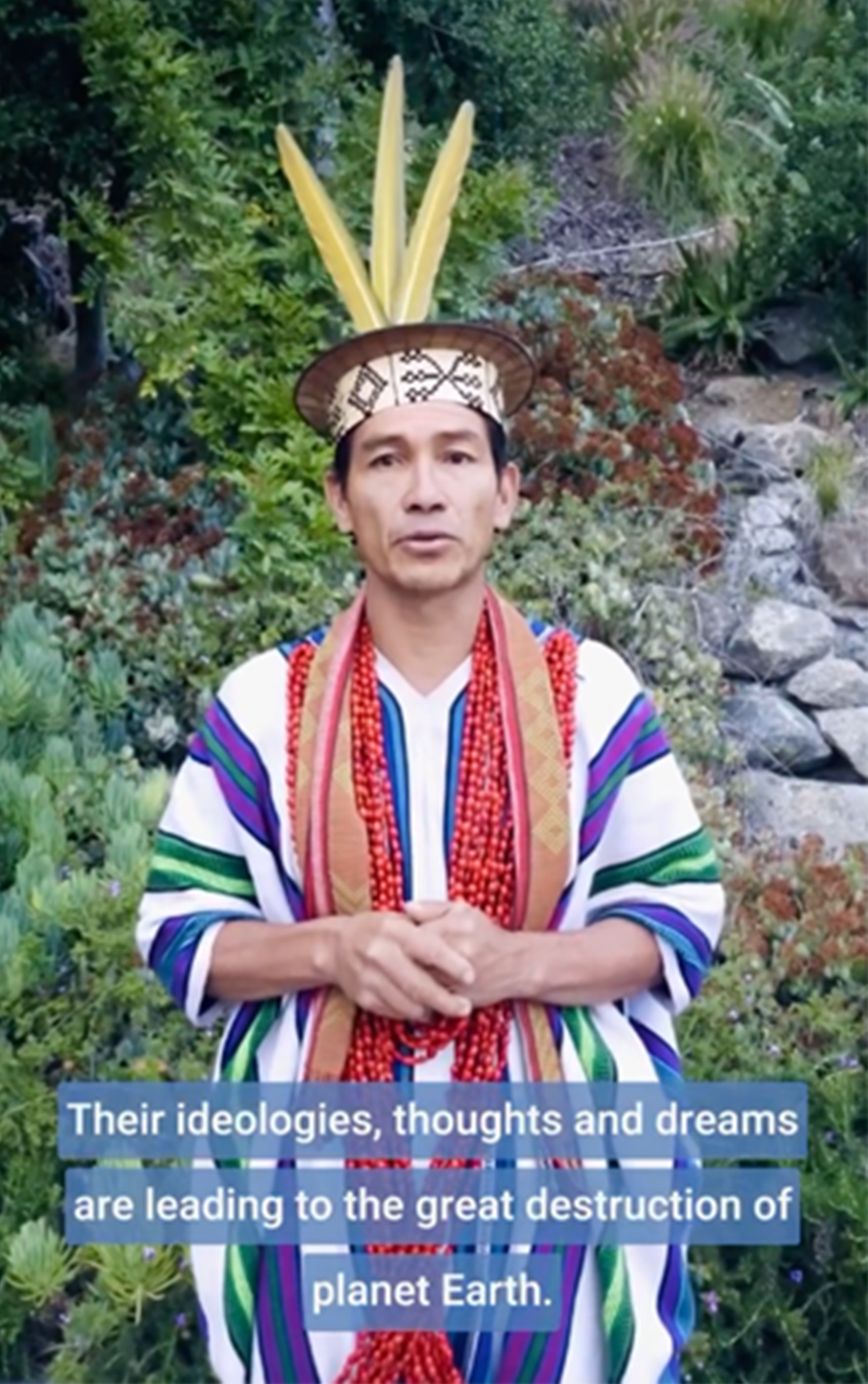
- Amy Bowers Cordalis, a Yurok attorney, fisherwoman, and tribal leader, connects reforestation with cultural renewal: “Climate, biodiversity, and conservation are deeply intertwined; solutions to the climate crisis often lie in protecting biodiversity and embracing local, nature-based solutions. … Governments and corporations must move beyond the exploitation of Indigenous resources and conflict with Indigenous nations, and instead form partnerships that honor Indigenous legal rights, knowledge, and unique political status.”
- Ron Reed, a Karuk tribal member and cultural practitioner, emphasizes the importance of traditional land management: “Our ceremonial trails provide a spiritual and geographic center for my family. …Our trail system is over 20 miles in length and includes steep, mountainous terrain. Impassable brush along these trails is a significant problem: overgrowth of the forest, caused by fire suppression policies and colonial legacies, now prevents the medicine man from fulfilling his responsibilities. …By working on our trails, family members are protecting and relearning Karuk ceremonial traditions through the teachings that the trails have to offer us.”
- In the Amazon, Ashaninka leader Benki Pyãnko frames reforestation as part of a broader spiritual and ecological duty: “We have planted over 2 million trees already for this project, which is called Yorenka Ãtame, and by doing so, we have recovered many water sources and brought life back to our rivers. My project is to plant another 10 million trees…. The idea is to put people in connection with nature again. We intend to cure the world through curing people’s minds.”
- Australian Indigenous practices express similar values. Peta-Marie Standley of the Firesticks Alliance underscores how cultural burning (quite a different notion from the Western impulse to aggressively suppress forest fires) helps forests regenerate: “There’s an awareness around cultural burning now, but it can’t just be taken and published as Western knowledge. … Without fire, we wouldn’t exist. It is a tool, and it’s something all of us need to learn to use wisely.”
- In Canada, Indigenous stewardship programs emphasize the value of “caring for country,” which is a concept that links ecological restoration with cultural identity, health, and autonomy: “‘Caring for country’ … reconnects Indigenous identity, autonomy, and health … while delivering environmental outcomes.”
The Global Impact of Reforestation
Although the impact of deforestation might seem to mostly affect the local cultures and economies surrounding a particular forest ecosystem, the ripples spread much farther afield. “It’s not only the forest-dependent communities, but proximate communities and the whole planet” that are vulnerable to ecosystem collapse, notes Joice Ferreira, a rainforest researcher for the Brazilian government. “We are very much interconnected.”
“Forests are portrayed not only as sources of commodities but also as global public goods that serve as ‘shock absorbers,’ stabilizing the climate, water, and livelihoods for about 6 billion regular users,” explains Wang.
Deforestation and reforestation are powerful forces shaping the planet’s climate, biodiversity, and human well-being. Deforestation contributes about 10–15% of global greenhouse gas emissions each year, disrupts rainfall patterns, and accelerates soil erosion and biodiversity loss. It threatens millions of species and undermines the livelihoods of indigenous and rural communities that depend on forests.
In contrast, reforestation – especially when combining tree planting with natural regeneration – offers a critical pathway to mitigate climate change by sequestering carbon, restoring degraded ecosystems, and protecting water resources. When implemented thoughtfully, reforestation can not only offset the damage caused by deforestation but also strengthen climate resilience, improve local economies through carbon credits and sustainable forestry, and revive habitats for countless species.
